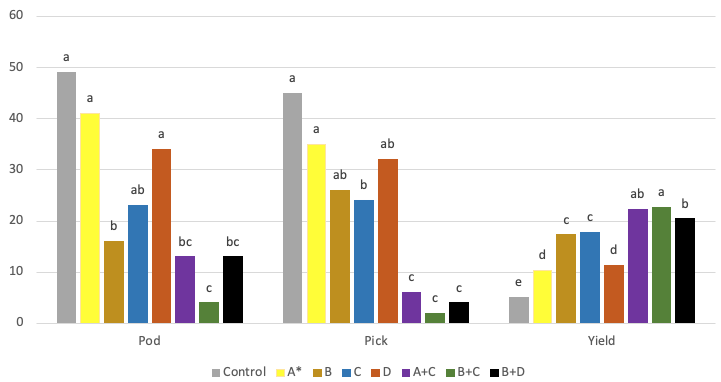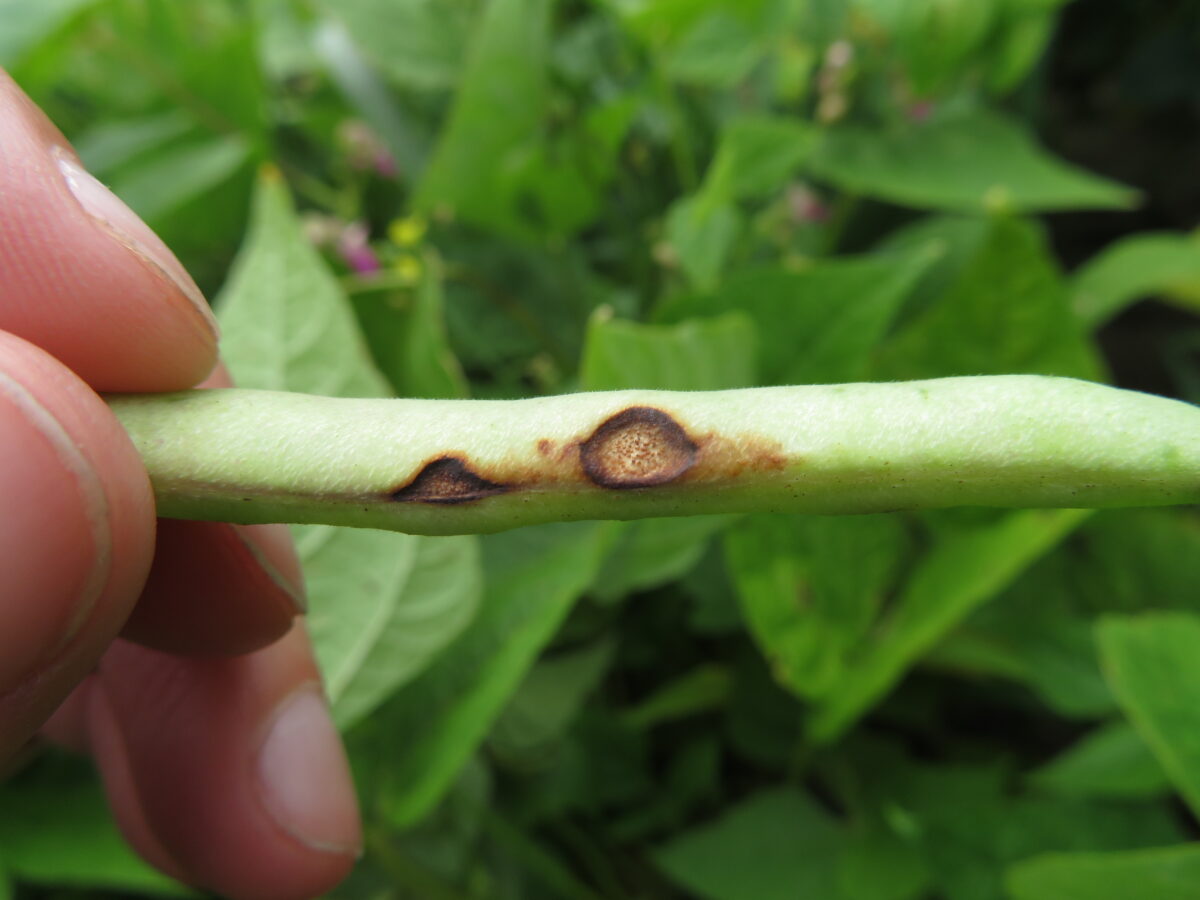Anthracnose is a serious disease that reduces yield and seed quality in beans. Seed treatments and strobilurin fungicides are important tools to manage the disease. The purpose of this study was to find the best fungicide timing, in combination with a seed treatment, to manage anthracnose in a bean crop in Ontario and Manitoba.
There were a total of four studies done at Morden MB and Exeter ON in 2005-2006. Seed infected with anthracnose were treated with DCT (diazinon + captan + thiophanate-methyl) or Apron Maxx (fludioxonil + metalaxyl-m). After emergence, Headline or Quadris were applied at four single timings of 5th trifoliate (A), 1st flower (B), full flower (C) and 10 days after full flower (D), as well as three dual applications of A+C, B+C and B+D. Leaf and pod infection (%), maturity, pick, seed weight and yield were measured. Disease pressure ranged from low to high across the sites.

Bars within a group with the same letter are not significantly different
(P<0.05).* A = 5th trifoliate, B = 1st flower, C = full flower, D = 10 days after full flower
DCT was better than Apron Maxx under both low and high disease pressure (data not shown). A seed treatment plus a fungicide gave less disease, higher yield and lower seed pick than a seed treatment alone. A dual fungicide timing was better than a single fungicide application for most studies (Figure 1). The B+C dual fungicide timing (green bar) was the best treatment overall, giving the lowest disease severity and pick, as well as the highest yield. Under moderate to severe anthracnose disease pressure, a seed treatment and two fungicide applications were needed to give the highest economic returns.
Originally published in Crop Protection 2012. Volume 37. Pages 81-90. Revised in July 2020 for drybeanagronomy.ca.
